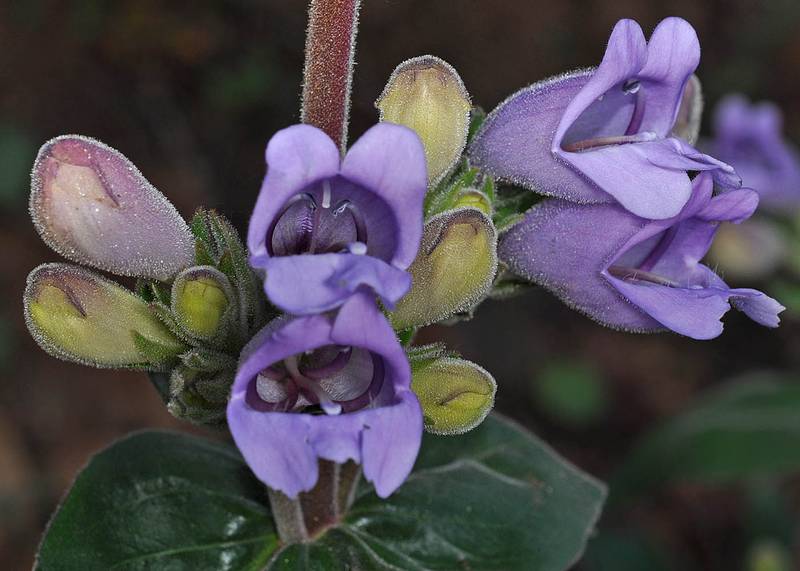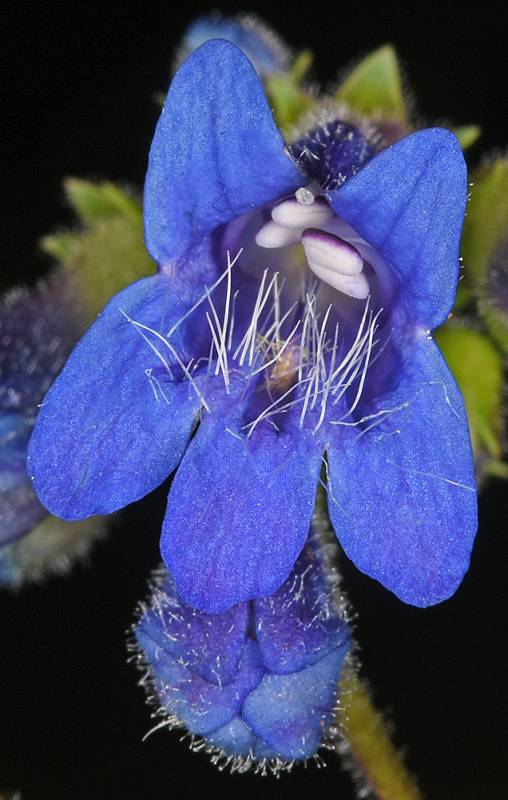Penstemon glandulosus
Penstemon wilcoxii
glandular penstemon
Wilcox's beardtongue
Leaves opposite, sharply toothed or entire, the basal ones 10-35 cm. long and 2.5-9 cm. wide, petiolate, the blade lanceolate to elliptic; lowermost cauline leaves reduced, the others well-developed, sessile and often clasping, broadly lanceolate to rotund-ovate, 4-12 cm. long and 2-5 cm. wide.
Leaves opposite, strongly serrate with slender teeth, the basal leaves well-developed, elliptic to deltoid-ovate, the blade up to 9 cm. long and 5 cm. wide, about equal to the petiole;
cauline leaves often larger than the basal, sessile, 4-10 cm. long and 1.5-4 cm. wide.
Inflorescence of several verticillasters;
calyx 9-15 mm. long, the 5 segments narrow and herbaceous;
corolla blue-lavender, strongly glandular-hairy outside, glabrous inside, 28-40 mm. long, over 1 cm. wide at the mouth;
anthers permanently horseshoe-shaped, 1.7-2.3 mm. long;
pollen sacs dehiscent across their apices, the lower part saccate and indehiscent, glabrous;
staminode glabrous, the tip flattened.
Inflorescence of several large, loose verticillasters;
calyx 2.5-5 mm. long, the 5 segments broadly lanceolate, narrowly scarious-margined;
corolla blue, the paler throat with guide lines, 15-23 mm. long, the tube 4-8 mm. wide at the mouth, glandular-hairy on the outside, strongly bilabiate, the lower lip much longer than the upper, the raised portion bearded;
pollen sacs 0.7-1.0 mm. long, wholly dehiscent, becoming opposite, glabrous;
staminode with a recurved, bearded tip.
Capsules 10-14 mm. long, surpassed by the calyx.
Capsule 4-6 mm. long.



